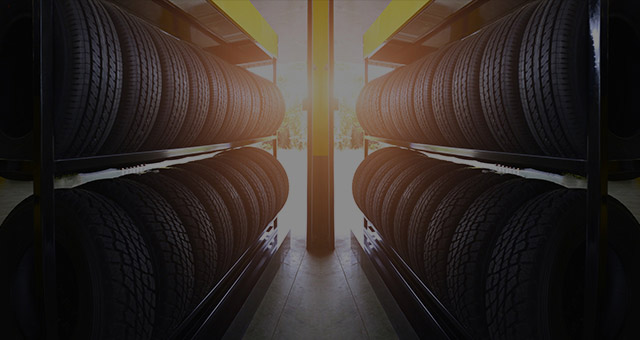Discover the most effective Tires Morris IL: Extensive Option Offered
Discover the most effective Tires Morris IL: Extensive Option Offered
Blog Article
Tire Service: Recognizing Tire Pressure Monitoring Systems
Comprehending Tire Stress Tracking Solutions (TPMS) is a crucial aspect of keeping optimal automobile efficiency and safety and security when driving. With developments in auto technology, TPMS has ended up being a basic function in contemporary vehicles, offering real-time information on tire pressure degrees. Delving deeper right into the complexities of TPMS, one can uncover the numerous parts that compose this system and the significance of each in guaranteeing accurate surveillance. From straight to indirect TPMS systems, the landscape of tire stress monitoring varies, each with its distinct set of advantages and considerations. Keep tuned to decipher the complexities of TPMS, from upkeep ideas to the indisputable advantages of maintaining your tires appropriately pumped up. mopar tire service specials.

Importance of TPMS
The significance of Tire Pressure Surveillance Equipments (TPMS) exists in their capability to boost vehicle security and performance through real-time monitoring of tire pressure levels. Preserving the correct tire pressure is critical for making certain optimal handling, braking, and overall safety and security of a vehicle. TPMS offers chauffeurs with immediate responses on any type of underinflated or overinflated tires, enabling for prompt adjustments to be made.
Elements of TPMS
Comprising numerous essential elements, a Tire Stress Surveillance System (TPMS) works as an advanced safety and security attribute in modern cars. The major parts of a TPMS consist of sensors, a control component, and a warning sign. Sensing units are generally located in the tire valve stem or affixed to the wheel setting up, where they measure tire pressure and send data to the control component. The control module processes this information and activates a warning if it identifies substantially low stress in any of the tires. The warning indicator, usually a symbol on the control panel, alerts the driver to check the afflicted tire or tires. Some progressed TPMS models also display the real tire stress readings for each tire, providing drivers with real-time info to make sure ideal tire efficiency and security. By checking tire stress constantly, TPMS assists stop accidents, lowers tire wear, and boosts fuel performance, making it an important element for lorry safety and efficiency.
Types of TPMS

On the other hand, indirect TPMS counts on the automobile's wheel speed sensors to keep an eye on tire stress. This system spots underinflation by comparing the rotational speeds of the wheels. Indirect TPMS is much less pricey than direct TPMS, as it makes use of existing sensing units within the car.
While direct TPMS uses extra exact analyses, indirect TPMS is less complex in style and typically needs much less maintenance. Both systems have their benefits and constraints, and the option between them commonly depends on aspects such as expense, lorry make, and individual choice. Comprehending the differences between these two kinds of TPMS can aid automobile owners make informed choices pertaining to tire upkeep and security.
TPMS Upkeep Tips
Conduct routine checks on the tire stress degrees This Site and compare them with the TPMS analyses to guarantee they are constant. During tire rotation or substitute, make certain that the TPMS components are taken care of very carefully to avoid any kind of potential damage. If the TPMS warning light brightens on the dashboard, attend to the concern without delay by examining the tire stress and the overall system for any kind of mistakes.
Benefits of Appropriate Tire Pressure
Preserving correct tire pressure, as emphasized in TPMS Maintenance Tips, is important for enjoying the numerous benefits connected with ideal tire stress degrees. Among the key benefits of preserving the right tire pressure is improved fuel efficiency. When tires are appropriately pumped up, there is much less rolling resistance, leading to better gas economic climate. Additionally, proper tire pressure guarantees even tire wear, extending the life expectancy of the tires and advertising much safer driving conditions. With the ideal tire stress, vehicles additionally have far visit site better handling and traction, particularly in damaging weather conditions. This can improve total driving performance and safety and security for the motorist and passengers. Moreover, maintaining optimum tire pressure can contribute to a smoother and more comfortable trip by lowering resonances and noise caused by underinflated tires. In final thought, the advantages of correct tire stress exceed just tire longevity; they incorporate boosted gas efficiency, enhanced security, better automobile efficiency, and general driving convenience.
Conclusion
To conclude, recognizing tire pressure tracking systems (TPMS) is important for maintaining ideal tire stress and making certain car safety. By identifying the value of TPMS, being familiar with its parts, knowing the different kinds offered, sticking to correct maintenance tips, and realizing the advantages of preserving appropriate tire pressure, chauffeurs can improve their driving experience and lengthen the life-span of their tires. Correct tire stress is key have a peek here to secure and efficient vehicle procedure.

Report this page